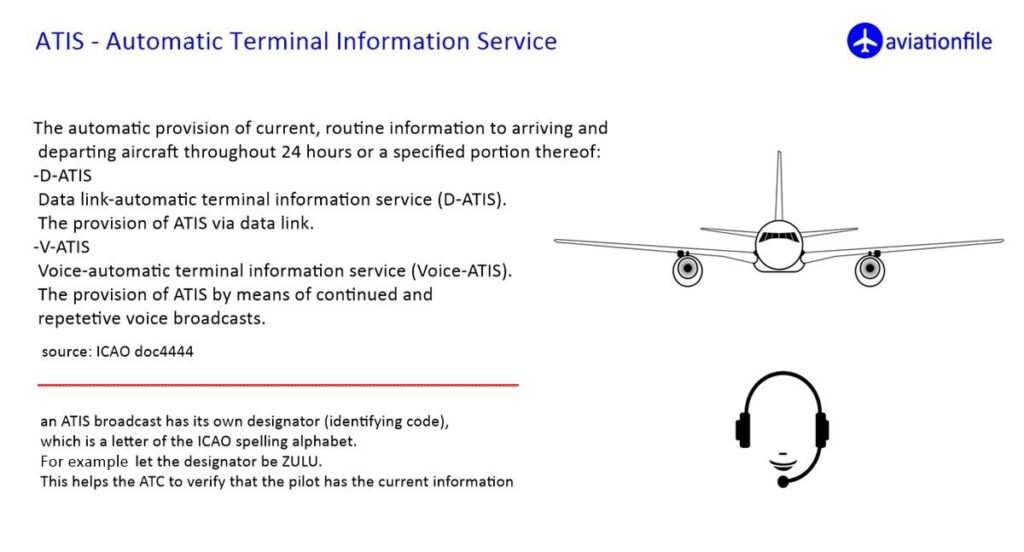
Ever wondered how pilots navigate complex airport environments with constant traffic? One key tool in their arsenal is the Automatic Terminal Information Service (ATIS). Let’s take a deep dive into what ATIS is, the information it provides, and how pilots utilize it for a smoother and safer flying experience.
ATIS is a continuous broadcast of pre-recorded or synthesized voice messages containing critical aeronautical information for a specific airport or terminal area. It operates 24/7 at busy airports, automatically updating with the latest weather, runway conditions, and other pertinent details.
There are two types of ATIS broadcast: D-ATIS (Data Link-Automatic Terminal Information Services) and Voice-ATIS. Both must be published in the same content and format. With Voice-ATIS, the pilot listens to the voice broadcast in the cockpit and takes notes. However, many aircraft now use D-ATIS. The system, integrated into the FMS, guarantees that all information is printed out. The pilot does not need to listen to the broadcast one by one as in Voice ATIS, and the ability to print out with D-ATIS reduces the workload of the pilots. In order to use D-ATIS, the ground station must also have the equipment that can provide this broadcast.
ATIS serves a multitude of purposes, benefitting both pilots and air traffic controllers:
The ATIS record is updated regularly or whenever there is a significant change. Each ATIS broadcast is allocated a letter starting from A and takes its name from the alphabet, respectively. Each new ATIS message is named with the next letter of the alphabet. Thus, when an air traffic control (ATC) unit notifies its current ATIS code, the air traffic controller knows whether the pilot’s information is up to date. In this case, pilots report on their first contact with air traffic controllers whether they have ATIS information.
If ATIS is not received by the pilot or if the pilot has incorrect ATIS information, air traffic units can transmit ATIS information to pilots under the name of “departure information” or “landing information”. Pilots should listen ATIS broadcast before the first contact as much as possible to reduce the workload on air traffic units. For example, if pilots say ‘Information A copied’ on their first contact, but if the new ATIS B is published just before the contact, the relevant air traffic unit will provide up-to-date ATIS information or the pilot may be advised to take / listen to the new broadcast.
Whenever possible, broadcast ATIS on a separate VHF frequencies. And should not interfere with other navigation equipment. It is broadcast in English for international aviation services at airports, broadcasts are suitable for more than one language, and separate channels are used for each language to be used.
The contents of ATIS publications may contain all or some of the following information:
Source of ATIS content: skybrary.aero

For more articles click.